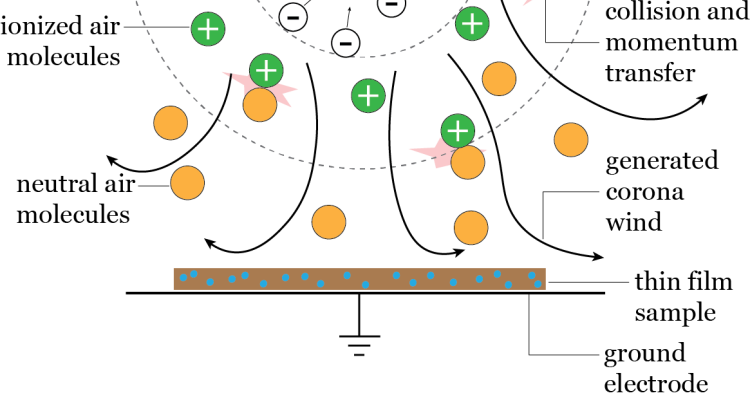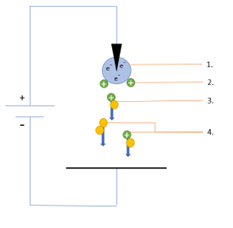
Project
Electrohydrodynamic Drying of Thin Films
Background
Drying is a water removal process required for many different applications (e.g. paper, food ingredients, chemicals). Currently, removal of water from semi-solids or solids is often carried out in fully thermally driven processes. The heat load can lead to negative changes in the product, such as protein denaturation, product coloring, or oil oxidation. Next to having a possible negative impact, drying is also an energy intensive step in production chains representing 15-25% of the total industrial energy consumption. A milder drying method would present a more sustainable and less harmful approach of dewatering.
In this project, electrohydrodynamic (EHD) drying is studied as a more efficient and milder option for drying of (semi-) solid films. EHD drying uses an electric field to generate an ionic wind to enhance the drying efficiency. This ionic wind is generated between two electrodes connected in a circuit with space between the electrodes (Figure 1). Due to momentum transfer between charged particles (moving towards the grounded electrode) and neutral particles as wind is generated.

Approach
The effect of EHD drying on process parameters (e.g. energy consumption and drying time) and on product quality will be studied in a new EHD set-up. Drying parameters such as film thickness and EHD parameters such as distance between electrodes will be varied. First trials will be performed on a small scale EHD set-up, from which the data will be used to develop a predictive model. The predictive model and previously mentioned collected data will then be used for the design of a bench scale continuous EHD device.